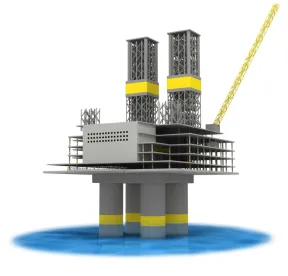The Washington State Supreme Court recently held that two oil terminal facility expansion projects, near coastal waters in Washington State, are subject to review under the Ocean Resources Management Act (ORMA). ORMA requires the State and local municipal governments to consider the economic benefits of development on Washington’s coast together with the State’s interests in protecting its coastal habitats and limiting production of fossil fuels when permitting projects that will adversely impact those habitats. The case, Quinault Indian Nation, et al., v. Imperium Terminal Services, et al. (Quinault),[1] is the first time Washington’s highest court has interpreted and applied ORMA. The case breaks new ground and portends additional regulatory review and approval processes—and capital expenditure requirements—for oil and other fossil fuel projects along Washington’s Pacific coastline and associated areas.
What is ORMA?
The Washington legislature passed ORMA in 1989 in response to, among other things, the Nestucca and Exxon Valdez oil spills off the coasts of Washington and Alaska. The statute was written and enacted as the federal government was actively pursuing leasing plans for the exploration, development and extraction of mineral resources, including oil and gas, off Washington’s coast.[2] At the time, commentators described the statute as “[a]n effort to protect Washington’s coastline from the potential hazards of oil drilling”[3] and an effort “to create a state policy on offshore oil exploration.”[4] With respect to oil drilling and exploration, the statute provides that “[t]here shall be no leasing of Washington's tidal or submerged lands extending from mean high tide seaward three miles along the Washington coast from Cape Flattery south to Cape Disappointment, nor in Grays Harbor, Willapa Bay, and the Columbia river downstream from the Longview bridge, for purposes of oil or gas exploration, development, or production.”[5]
ORMA is designed to “articulate policies and establish guidelines for the exercise of state and local management authority over Washington’s coastal waters, seabed, and shorelines.”[6] The Washington State Department of Ecology (Ecology) and local permitting authorities are charged with enforcing the statute and its requirements. To that end, Ecology has promulgated rules and regulations to implement ORMA.[7]
ORMA applies to “uses or activities that require federal, state, or local government permits or other approvals and that will adversely impact renewable resources, marine life, fishing, aquaculture, recreation, navigation, air or water quality, or other existing ocean or coastal uses.”[8] The statute, however, does not define “uses” or “activities.” Ecology’s implementing regulations define “ocean uses” as “activities or developments involving renewable and/or nonrenewable resources that occur on Washington’s coastal waters.”[9] “Ocean uses” also include the “associated off shore, near shore, inland marine, shoreland, and upland facilities and the supply, service, and distribution activities, such as crew ships, circulating to and between the activities and developments. Ocean uses involving nonrenewable resources include such activities as extraction of oil, gas and minerals, energy production, disposal of waste products, and salvage. Ocean uses which generally involve sustainable use of renewable resources include commercial, recreational, and tribal fishing, aquaculture, recreation, shellfish harvesting, and pleasure craft activity.”[10] Ecology has interpreted
ORMA and its regulations as covering projects on Washington’s coastal waters.[11] That is to say, Ecology views ORMA as applying only to projects that are actually located on Washington’s coastal waters.[12]
ORMA also applies to “plans for the management, conservation, use, or development of natural resources in Washington’s coastal waters.”[13] The statute does not define “plans.” It defines “coastal waters” as “the waters of the Pacific Ocean seaward from Cape Flattery south to Cape Disappointment.”[14] The statute covers the “coastal counties” of Clallam, Jefferson, Grays Harbor and Pacific,[15] and identifies the Columbia River, Willapa Bay and Grays Harbor estuaries, and Olympic national park, as requiring special protection.[16] Click here to view a map of the coastal counties covered by ORMA.[17] Notably, ORMA does not cover Puget Sound.
ORMA requires uses or activities in need of federal, state or local permits or approvals, and “that will adversely impact renewable resources, marine life, fishing, aquaculture, recreation, navigation, air or water quality, or other existing ocean or coastal uses,” to meet or exceed the following criteria:
-
A demonstrated significant local, state, or national need for the proposed use or activity;
-
No reasonable alternative to meet the public need for the proposed use or activity;
-
No likely long-term significant adverse impacts to coastal or marine resources or uses;
-
All reasonable steps are taken to avoid and minimize adverse environmental impacts, with special protection provided for the marine life and resources of the Columbia river, Willapa Bay and Grays Harbor estuaries, and Olympic national park;
-
All reasonable steps are taken to avoid and minimize adverse social and economic impacts, including impacts on aquaculture, recreation, tourism, navigation, air quality, and recreational, commercial, and tribal fishing;
-
Compensation is provided to mitigate adverse impacts to coastal resources or uses;
-
Plans and sufficient performance bonding are provided to ensure that the site will be rehabilitated after the use or activity is completed; and
-
The use or activity complies with all applicable local, state, and federal laws and regulations.[18]
The Projects in the Quinault case
The projects in the Quinault case involve petroleum terminal expansions in the Port of Grays Harbor within the city of Hoquiam (Hoquiam). Both projects would be situated along the shores of Grays Harbor and the Chehalis River, approximately 160 feet from the river. The first project, advanced by Westway Terminal Company LLC (Westway), would expand Westway’s current petroleum products storage terminal by constructing four aboveground storage tanks for storing crude oil, adding rail spurs with a total of 76 loading spots for trains carrying oil to its expanded facilities, and constructing vapor combustion and structural hose support systems for loading tanker vessels with crude oil. The second project, advanced by Imperium Terminal Services LLC (Imperium), would expand the company’s adjacent terminal facility by adding nine additional storage tanks, new rail tracks and an expanded rail yard, and enhanced piping and vapor systems for marine vessel loading.
Project Permitting and Related Lower Court Decisions
Westway and Imperium sought and obtained shoreline development permits under the State’s Shoreline Management Act[19] for the projects from Hoquiam and Ecology. The Quinault Indian Nation (Tribe) and several other entities[20] appealed Hoquiam’s and Ecology’s issuance of permits for the projects arguing, among other things, that Hoquiam and Ecology could not issue the permits without first analyzing whether the projects complied with ORMA. The Pollution Control Hearings Board and the Washington Court of Appeals held ORMA did not apply to the projects. They interpreted ORMA as applying to activities in the ocean, such as the extraction of oil, gas and/or minerals from the seafloor, but not to projects like Westway’s and Imperium’s that involve the construction of onshore structures. The Tribe and other entities appealed to the Supreme Court. The Supreme Court ruled ORMA applies to both projects.
The Supreme Court’s Decision
In reaching its conclusion that Hoquiam and Ecology must review the projects under ORMA, the Court held the statute must be broadly interpreted and liberally construed. The Court described the statute as “a balancing tool intended to be used by local governments to weigh the commercial benefits of coastal development against the State’s interest in protecting coastal habitats and conserving fossil fuels.”[21] While noting the important commercial and economic benefits associated with ocean and shoreline development, the Court found the legislature enacted ORMA “to address environmental threats to our coastal waters” and specifically “the threats posed by increased expansion of the fossil fuel industry along the Pacific Coast.”[23] The Court interpreted the statute as a legislative tool “to combat current environmental dangers and to preemptively protect the coastline from future environmental risks.”[22]
The Court held the purpose and language of the statute clearly include Westway’s and Imperium’s proposed terminal expansion projects near the coastal waters of Grays Harbor. In the Court’s opinion, the fact the projects would not literally be in Washington’s coastal waters is irrelevant to ORMA’s application: “they would pump petroleum over those coastal waters, transfer [petroleum] into vessels floating in those coastal waters, and require additional transfer installations on a dock located on those coastal waters.”[24] The Court found this conclusion to be consistent with ORMA’s mandate, which, in the Court’s words, “is to carefully review development projects that involve nonrenewable resources and pose a risk of damage to the environment in Washington’s sensitive coastal waters.”[25]
The Court also held that Westway’s and Imperium’s projects fit squarely within Ecology’s regulatory definition of ocean uses: “because these projects are developments that use nonrenewable resources and are situated on Washington’s coast, we find that they qualify as ‘ocean uses.’”[26] Ecology’s narrower construction of its own definition of “ocean uses” to include only in-water projects, the Court stated, interprets ORMA too narrowly and improperly alters the statute’s intent.[27]
What Quinault Could Mean for Energy Projects in Washington State
Quinault suggests additional regulatory review and approval may be required for oil, gas and other fossil fuel projects in Clallam, Jefferson, Grays Harbor and Pacific counties. Given the Court’s application of ORMA to out-of-water projects—at least those with a nexus to Washington’s coastal waters—and the Court’s broad reading of the statute, there remains the potential for the decision to be used as a vehicle to apply ORMA beyond the statute’s intended scope: review and regulation of offshore fossil fuel projects in the coastal counties of Clallam, Jefferson, Grays Harbor and Pacific.
Some potential takeaways and implications of the Quinault decision include the following:
-
The development of future energy projects in Washington’s inland waters. Quinault could incentivize development of and along inland waters not covered by ORMA, such as in the Columbia River or Puget Sound.
-
Broad coverage of other types of energy projects, including renewable projects. Based on the Court’s broad interpretation of the statute, and Ecology’s inclusion of renewable projects in its definition of “ocean uses” covered by the statute, it is possible ORMA will be interpreted to cover uses and activities other than fossil fuel projects on Washington’s coast (e.g., offshore wind and tidal energy projects).
-
Policy choices regarding fossil fuel projects on Washington’s coast. Although ORMA recognizes the commercial importance of projects along Washington’s coast and does not expressly dictate a particular decision or result, it favors projects that do not adversely impact renewable resources and that limit the use of fossil fuels.
How Agencies, the Legislature and Courts Might Treat ORMA Moving Forward
In addition to the potential implications and uncertainties discussed above, it remains to be seen how Ecology will implement ORMA going forward. For example, Ecology may have to rewrite or reinterpret its ORMA regulations. Thus far Ecology has interpreted ORMA as applying to in-water activities and uses, such as drilling for oil or minerals in the ocean floor. In Quinault, the Supreme Court was clear—it interprets ORMA as applicable to out-of-water fossil fuel projects, and potentially other energy projects, along Washington’s Pacific Coast. Ecology will have to determine how ORMA applies in light of this decision, as well as in relation to the Coastal Zone Management,[28] a statute that also regulates activities in the State’s coastal zone,[29] and that Ecology plays a role in implementing.
The Washington State legislature could also address the Court’s decision. If the legislature decides Quinault goes beyond its original intent in enacting the statute,[30] it could amend ORMA to specify the statute applies only to in-water projects, e.g., drilling for oil and minerals in the Pacific Ocean off the coast of Washington, or repeal it all together.
ORMA could also be subject to preemption by federal interests and policies. For example, the Commerce Clause of the U.S. Constitution vests Congress with the power to regulate interstate commerce and, as a corollary, “denies the States the power unjustifiably to discriminate against or burden the interstate flow of commerce.”[31] The U.S. Supreme Court has said the “clearest example of such legislation is a law that overtly blocks the flow of interstate commerce at a State’s borders.”[32] “When a State ventures excessively into the regulation of these aspects of commerce, it trespasses upon national interests . . . and the courts will hold the state regulation invalid under the Clause alone.”[33] Applied broadly and consistently with the Court’s opinion in Quinault to curtail energy project development on Washington’s Pacific Coast, ORMA could be subject to attacks under the Commerce Clause.
In sum, Quinault and its interpretation of ORMA signal potential new permitting requirements for energy and other projects along Washington’s coast that impact coastal habitats. It will be up to Ecology, the courts, and future project proponents and permittees to more clearly define the statute’s boundaries and requirements.
[1] No. 92552-6 (Jan 12, 2017), https://www.courts.wa.gov/opinions/pdf/925526.pdf.
[2] 51 Wash. Leg., Final Leg. Report, HB 224, 1st and 2nd Special Sessions, at 166–67 (1989).
[3] Jim Simon, Curbs on Oil-Drilling Die Quietly in Legislature, Seattle Times, April 5, 1989, at A7.
[4] Jim Simon, Offshore-Oil Bill Takes on New Life Senate Committee Reverses Action, Seattle Times, April 14, 1989 at B3.
[5] RCW 43.143.010(2) (emphasis added).
[6] RCW 43.143.010(1).
[7] WAC 173-26-360.
[8] RCW 43.143.010(2) (emphasis added).
[9] WAC 173-26-360(3).
[10] WAC 173-26-360(3).
[11] Quinault, No. 92552-6 at 18.
[12] Id.
[13] RCW 43.143.030(1).
[14] RCW 43.143.020(2).
[15] RCW 43.143.020(1).
[16] RCW 43.143.030.
[17] Map courtesy of Department of Ecology, Washington State Coastal Zone Management (CZM) Program, Department of Ecology State of Washington, http://www.ecy.wa.gov/programs/sea/czm/prgm.html (last visited Jan. 28, 2017).
[18] RCW 43.143.030(2). See also WAC 173-26-360(6).
[19] Chapter 90.58 RCW.
[20] The other entities were the Friends of Grays Harbor, Sierra Club, Grays Harbor Audubon, and Citizens for a Clean Harbor.
[21] Quinault, No. 92552-6 at 9.
[22] Id. at 10–11.
[23] Id.
[24] Id. at 13 (emphasis in original).
[25] Id. at 15.
[26] Id. at 18.
[27] Id. at 17.
[28] 16 U.S.C. § 1451 et seq.
[29] In Washington, this “coastal zone” is defined to include the following 15 Washington counties: Clallam, Grays Harbor, Island, Jefferson, King, Kitsap, Mason, Pacific, Pierce, San Juan, Skagit, Snohomish, Thurston, Wahkiakum and Whatcom.
[30] 51 Wash. Leg., Final Leg. Report, HB 224, 1st and 2nd Special Sessions, at 166–68 (1989).
[31] Oregon Waste Systems, Inc. v. Dep’t of Environmental Quality of the State of Oregon, 511 U.S. 93, 98, 114 S.Ct. 1345, 128 L.Ed.2d 13 (1994).
[32] City of Philadelphia v. New Jersey, 437 U.S. 617, 624, 98 S.Ct. 2531, 57 L.Ed.2d 475 (1978) (declaring unconstitutional—in the face of environmental protectionist arguments—a New Jersey law prohibiting importation of solid and liquid wastes generated outside the state).
[33] Kassel v. Consolidated Freightways Corp. of Delaware, 450 U.S. 662, 669, 101 S.Ct. 1309, 67 L.Ed.2d 580 (1981) (holding Iowa limitations on the length of freight trucks transporting goods within the state unconstitutional under the Commerce Clause).







 />i
/>i
